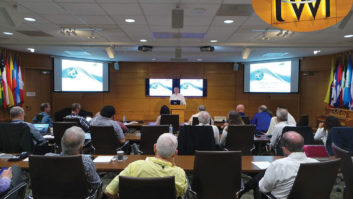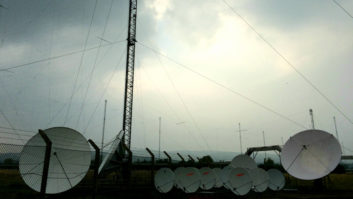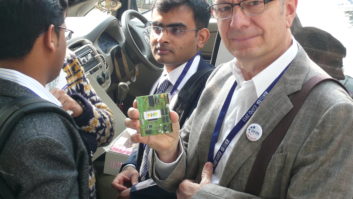BEIJING — It appears as if China has jumped into Digital Radio Mondiale shortwave broadcasting with both feet. Some DRM infrastructure has been in place for over a decade, but up until recently had only been sporadically tested.

Just over a year ago, China had no regular DRM presence. Today, it is the world’s largest DRM shortwave broadcaster. China operates the most DRM transmitters in this band and has the most extensive schedule.
The initial broadcasts started in early 2018 from Beijing. Services continued to rollout over the year via various transmitter sites, often on the country’s periphery.
A DRM shortwave transmitter in Beijing targets north China almost 24 hours a day. A second Beijing transmitter targets east China for eight hours a day.

Another transmitter in Ürümqi in the country’s west targets central and east China for 14 hours a day, while a transmitter in Qiqihar, Heilongjiang province (the Manchurian plain), is on more than 11 hours a day and reaches south and southwest China. Dongfang on Hainan Island province is on eight hours a day on two frequencies for both north and southeast China. Finally, the DRM shortwave transmitter located in Kunming in the Yunnan province is on eight hours daily for south China. There is now a DRM network providing nationwide coverage.
By comparison All India Radio has 11.5 hours a day of shortwave time coming from a single transmitter. The Indian broadcaster has as many as three more DRM-capable shortwave transmitters but they are not on air at present. India does operate 38 AM (medium wave) transmitters for its domestic network, however.
Programming takes place on the first channel of China National Radio, part of the country’s state-run domestic service. CNR is implementing a number of DRM features in its broadcasts. Improved fidelity is delivered by DRM’s wider bandwidth and many transmissions are in stereo.

China originally purchased a number of Thales (now Ampegon) DRM-capable transmitters over 15 years ago. China’s national high-tech research and development program is known as Project 863. Developing an indigenous DRM infrastructure was one of the project’s goals.
Some of the effort was conducted by the Engineering Research Center of Digital Audio and Video at the Communications University of China in Beijing.
ECDAV was tasked to develop a DRM encoder and modulator by 2008 and worked on a DRM transmitter a year later. By 2012, a complete DRM transmission system conducted on-air tests. The CNR network, which is rolling out today, is the culmination of that effort.

The main problem at this point remains the availability of DRM receivers. Gospell is China’s only manufacturer of DRM receivers. The company makes the GR-216, which is nonportable and is not readily available. It has also created the GR-227 digital radio car adaptor.
[Read: Super Typhoon Devastates USAGM Transmission Sites]
Perhaps the extensive schedule will spur mass-production of receivers. Either way, China has made its move into DRM broadcasting.
Hans Johnson has worked in the shortwave broadcasting industry for over 20 years as a sales and frequency manager.










